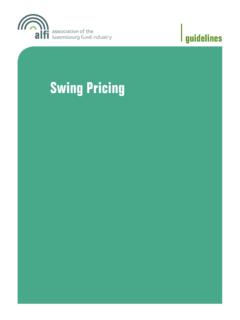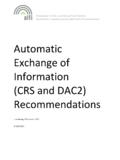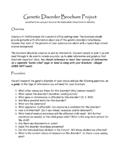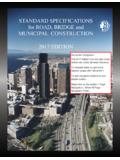Transcription of swing pricing - ALFI
1 swing pricingsurvey, reports & guidelines1 The Association of the Luxembourg Fund Industry (ALFI), the representative body for the Luxembourg investment fund community, was founded in 1988. Today it represents over a thousand Luxembourg-domiciled investment funds, asset management companies and a wide variety of service providers including depositary banks, fund administrators, transfer agents, distributors, law firms, consultants, tax advisers, auditors and accountants, specialist IT providers and communications is the largest fund domicile in Europe and its investment fund industry is a worldwide leader in cross-border fund distribution. Luxembourg-domiciled investment structures are distributed in more than 50 countries around the globe, with a particular focus on Europe, Asia, Latin America and the Middle defines its mission as follows: to Lead industry efforts to make Luxembourg the most attractive international centre.
2 Its main objectives are to:Help members capitalise on industry trendsALFI s many technical committees and working groups constantly review and analyse developments worldwide, as well as legal and regulatory changes in Luxembourg, the EU and beyond, to identify threats and opportunities for the Luxembourg fund regulationAn up-to-date, innovative legal and fiscal environment is critical to defend and improve Luxembourg s competitive position as a centre for the domiciliation, administration and distribution of investment funds. Strong relationships with regulatory authorities, the government and the legislative body enable ALFI to make an effective contribution to decision-making through relevant input to changes of the regulatory framework, implementation of European directives and regulation of new products or dedication to professional standards, integrity and qualityInvestor trust is essential for success in collective investment services and ALFI thus does all it can to promote high professional standards, quality products and services, and integrity.
3 Action in this area includes organising training at all levels, defining codes of conduct, transparency and good corporate governance, and supporting initiatives to combat money the Luxembourg investment fund industryALFI actively promotes the Luxembourg investment fund industry, its products and its services. It represents the sector in financial and economic missions organised by the Luxembourg government around the world and takes an active part in meetings of the global fund more information, visit our website at I swing pricing INDUSTRY SURVEY 5-10 Introduction and executive summary 5 Targeted audience of the swing pricing survey 5 Anti-dilution practices 6 Implementation, objectives and evaluation 6 Factor & threshold policy 7 Disclosure 8 Governance and monitoring 9 Client questions and NAV error policy 9 Regulatory guidance 9 Respondents who did not utilise swing pricing 9 Conclusion 10 PART II swing pricing GUIDELINES 12-28 Section 1 introduction.
4 Terms of reference and key principles 12 Section 2 definition of key terms 13 Section 3 swing pricing an overview 13 Section 4 calculating the swing factor 15 Section 5 conceptual considerations 16 Section 6 operational considerations 17 Section 7 investment fund structures 20 Section 8 performance considerations 24 Section 9 audit and legal considerations 25 APPENDICES: 29-32suggested disclosure alternatives 30-32table of contentspart I - swing pricing industry survey5part I - swing pricing industry surveyIn spring 2010 the Association of the Luxembourg Fund Industry (ALFI) recon-vened a swing pricing working group. This group was formed from various ALFI members over a broad spectrum of disciplines including fund auditors, fund promoters, asset managers, legal representa-tives and third party administrators.
5 The primary goal set by the chairman was to review, and if necessary update, guidance previously issued by ALFI in late 2006. In order to facilitate these objectives a survey was commissioned to research what has happened in the industry since the publica-tion of the original survey was designed to extract headline information and trends, providing the work-ing group with sufficient data to identify where further guidance was necessary. The result was that the survey responses were largely qualitative in nature and broken down into several thematic categories as follows: Awareness of the existing ALFI 2006 publication on swing pricing Anti-dilution methods on the product range Implementation, objectives and evaluation Factor and threshold policy Disclosure Governance and monitoring Client reaction and NAV error policy Regulatory guidance Respondents who did not utilise swing pricingSeveral key findings were extracted from the responses received.
6 Specific examples of such would be: Of the nineteen responses, thirteen fund promoters are utilising swing pricing as an anti-dilution technique. This has increased significantly since 2006 which perhaps may have been expected given the impact the credit crisis had on spreads (widened signifi-cantly) and fund liquidity (volatility on flows). There are still some grey areas in adoption of the practice, such as reporting, disclosures and impact to shareholder tax calculations. Fund promoters who use swing pricing seem to trend towards certain geographic locations (in the sense of where the parent company is headquartered). The overwhelming majority of market participants who have adopted swing pricing have found it beneficial. The results of the survey can be found on the following five and executive summaryALFI distributed the survey to the top 30 Luxembourg domiciled promoters by AUM ( m 1,292 representing of the Luxembourg AUM as of [ m 1,663]).
7 In addition the survey was advertised in an ALFI mail-shot to the industry where we received an additional number of responses from promoters and fund administrators. In total 19 responses1 were received. The respondents represented a wide geographic diversity in terms of their cultural centre and the location of their corporate headquarters, and account for m 944 representing of the Luxembourg assets under management ( ). From the geographic spread of responses we can see that a number of organisations present in the Luxembourg market who have their country of origin and cultural heritage in Switzerland, the UK or the USA, appear to have introduced this measure across their funds, whereas, from the evidence presented, promoters in Germany and Italy have been less willing to implement this. One reason potentially explaining this could be fund promoters seeking consistency with locally domiciled funds ( a German promoter being reluctant to introduce swinging on a Targeted audience of the swing pricing survey1 One of the 19 responses was received from a firm with funds entirely domiciled outside of Luxembourg; the AUM values and the bar chart only reflect the firms domiciled in I - swing pricing industry survey BE DE IT CH UK US6543210 Country of corporate headquartersBreakdown of responsesRespondentsNo swingswingLuxembourg range when it is unable to do so on a German-domiciled fund).
8 In addition one Norwegian fund promoter (with funds domiciled in Norway) responded to the survey and confirmed it had also adopted the practice. Interestingly no responses were received from organisations headquartered in other European locations. Whether this fact is indicative that there is a cultural divide in attitudes to swing pricing cannot be confirmed, however there is a suggestion. Note however that other factors may influence the lack of responses from these firms ( such as the fact the survey was distributed in English only).The sample is broken down as follows:Anti-dilution practices Investor protection against dilution is recognised as the overwhelming aim of implementing swing pricing for many respondents. In addition to swing pricing many promoters also use redemption gates and or dilution levies as remedies on their fund ranges.
9 These can either be present instead of swing pricing or co-exist with swing pricing on the same fund response to questioning about what the rationale of applying a dilution levy would be as opposed to swing pricing , several promoters differentiated that they applied dilution levy without swing pricing and generally on institutional product ranges. Nine firms that use swing pricing as a solu-tion seem to have adopted it post the publica-tion of the ALFI paper in November 2006 mainly around the time of the financial crisis. Four promoters had adopted it prior to 2006. We conclude therefore there seems to be a trend towards adoption of the practice. Implementation, objectives and evaluation It would appear that there is no overwhelming rationale in discriminating which products swing and which do not: where differenti ation occurs, the practice is influenced according to the underlying investments held, the investor type and the distribution channels rather than the legal structure of the fund.
10 The majority of respondents employed a partial swing approach with a select few choosing the full swing method. The logic for choosing one over the other was varied: some respondents chose partial to limit the frequency with which their funds swung and therefore reduce NAV volatility. Others stated that the product had sufficient liquidity to effectively manage small flows and that they were only concerned with material events triggering dilution. The choice of full swing seemed to be attributed to index funds by one promoter. Another promoter wanted to ensure perfor-mance across their multi-jurisdictional ranges was similar, and because full swinging is the only method recognised by the Swiss regulator, the individual promoter applied the same method to their Luxembourg choice of partial or full swingPartialFullMix of both62%15%part I - swing pricing industry surveyIn cases where the promoter decided to employ partial swing , its application was generally found to be mechanical in that the administrator will follow set parameters laid out by the promoter in the swing pricing policy document.













